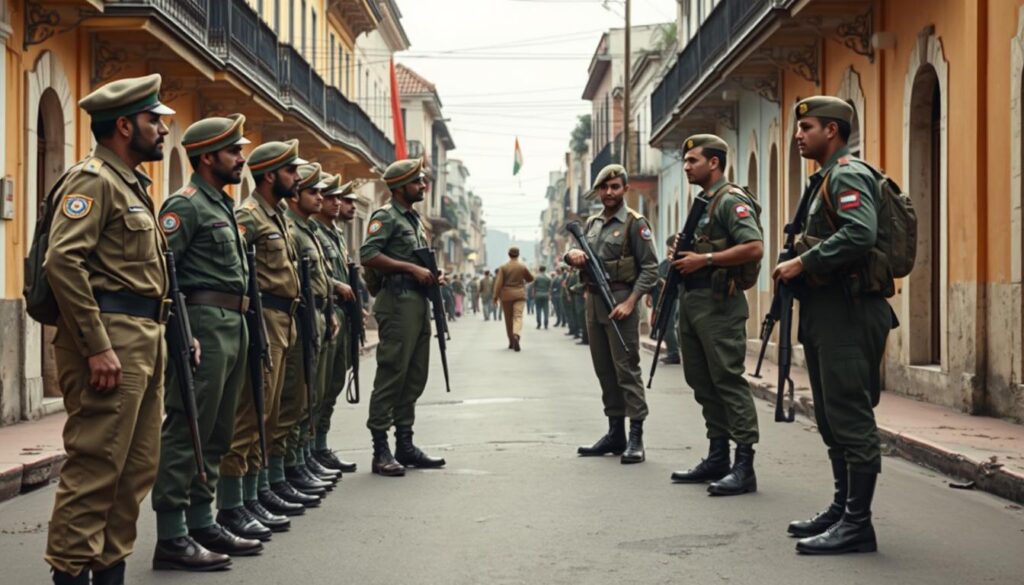Why Did Goa Remain Under Portuguese Rule After India's Independence?

In 1947, when India obtained freedom from the British colonial system, a lot of its historical past that was tied to colonization was forgotten. Yet, until 1961, Goa located on the western coast of India within Portuguese control. To comprehend how Goa stayed under Portuguese authority for long requires exploring an intricate relationship between internationality and local resistance along with diplomatic talks.
Colonial History of Goa
Goa became one of the first colonies of Asia for Portuguese who arrived there in 1510. Over time, Goa turned out to be an important instance for trade, culture, and religion in connection with the Portuguese Empire. By the time India got independence, Goan society had already experienced four centuries under Portuguese authorities which made it really influenced by Moors’ signification as regards lifestyle way and different aspects.
When the other parts of India were gradually incorporated into British territories, Goa remained different as a Portuguese territory. As such, when independence came to an independent nation in nineteen forty-seven (1947), it didn’t automatically mean reuniting with a section that bore Portuguese Markers since it was separate from India at that time.
The Diplomatic Struggle
During the time of Prime Minister Jawaharlal Nehru, India adopted a diplomatic approach for the integration of Goa into Indian Union. He believed that peaceful negotiations and international pressure would be the best way to solve this issue. But the Salazar’s dictatorial regime showed no signs of letting go the overseas territories, including Goa. In fact, Salazar’s government viewed losing Goa as a threat to the very foundation of Portuguese Empire and hence refused to negotiate.
The Indian government even went on international forums like United Nations during this period. But things were complicated by the Cold War situation in which USA especially supported Portugal, a NATO ally in retaining its hold over Goa. This gave Portugal more power and made things worse for India trying to engage in some diplomacy.
Local Resistance and the Role of the Goan Population
Inspired by the broader Indian independence movement, Goa had an emerging liberation movement. Several Goan leaders and activists began organizing protests, strikes, and underground movements against Portuguese rule. The most prominent of these was the Goa Liberation Movement, which gained momentum in the 1950s.
However, Portuguese administration in Goa was brutally repressive; dissent was met with violence. PIDE—Portuguese secret police—broke up freedom fighters’ activities resulting into imprisonment to several Goan nationalists as well as torturing them. Such harsh repression left room for fear locally thus making it hard for them to resist openly against Portuguese dominance.
However, others continued fighting for independence while some people resisted through literary and cultural expression that deceitfully ridiculed colonizers.
The Military Intervention: Operation Vijay
By the end of the 50s, it was clear beyond reasonable doubt that diplomacy had failed. Increasingly, the Government of India faced domestic pressures to act. Nehru who was earlier reluctant to employ force began considering military options as a last resort.
On December 18th 1961, India launched Operation Vijay which aimed at liberating Goa from Portuguese control. The operation lasted less than 36 hours and was swift and decisive in nature. The Indian Armed Forces including their Army, Navy and Airforce outnumbered and defeated the smaller forces of Portugal in Goa.
The surrender on December 19th 1961 was made by Manuel António Vassalo e Silva who was the Portuguese Governor-General of Goa thus ending 451 years of Portuguese rule in that region. Later on this part became part of Indian Union hence every year on December 19th liberation day for Goa is celebrated.
Aftermath and Legacy
The liberalization of Goa was met with jubilation all across India but drew a lot of international implications as well. For several years, under the regime of Salazar, Portugal refused to accept that it had lost Goa. The United Nations and various western nations criticized India’s use of force through the Cold War politics as violation of international laws.
Yet the majority of Goans received their incorporation into India with open arms and this transformation took place rapidly. Gradually, Goa acquired a shared ethos that combines its Portuguese ancestry with Indian identity to become one of the most unique states in India today.
Goa remains a site where the colonial past is reflected through its architecture, cuisine and other cultural practices; however, it also embodies liberation from colonialism and incorporation within independent India’s history as a victory for the movement aimed at achieving freedom from British rule.
Conclusion
The reason why Goa is under long term rule by Portugal despite being in India since independence can best be attributed to multifarious reasons among them historical, political and global aspects. It was ultimately through the unity of hearts in Goans together with some political decisions made by India that liberated this territory in 1961. At present, Goa represents an indelible mark of hope against tyranny and abuse against humanity that seems like a myth, revolving around the history it had prior to joining Northern India; yet never forgets its cultural past.
